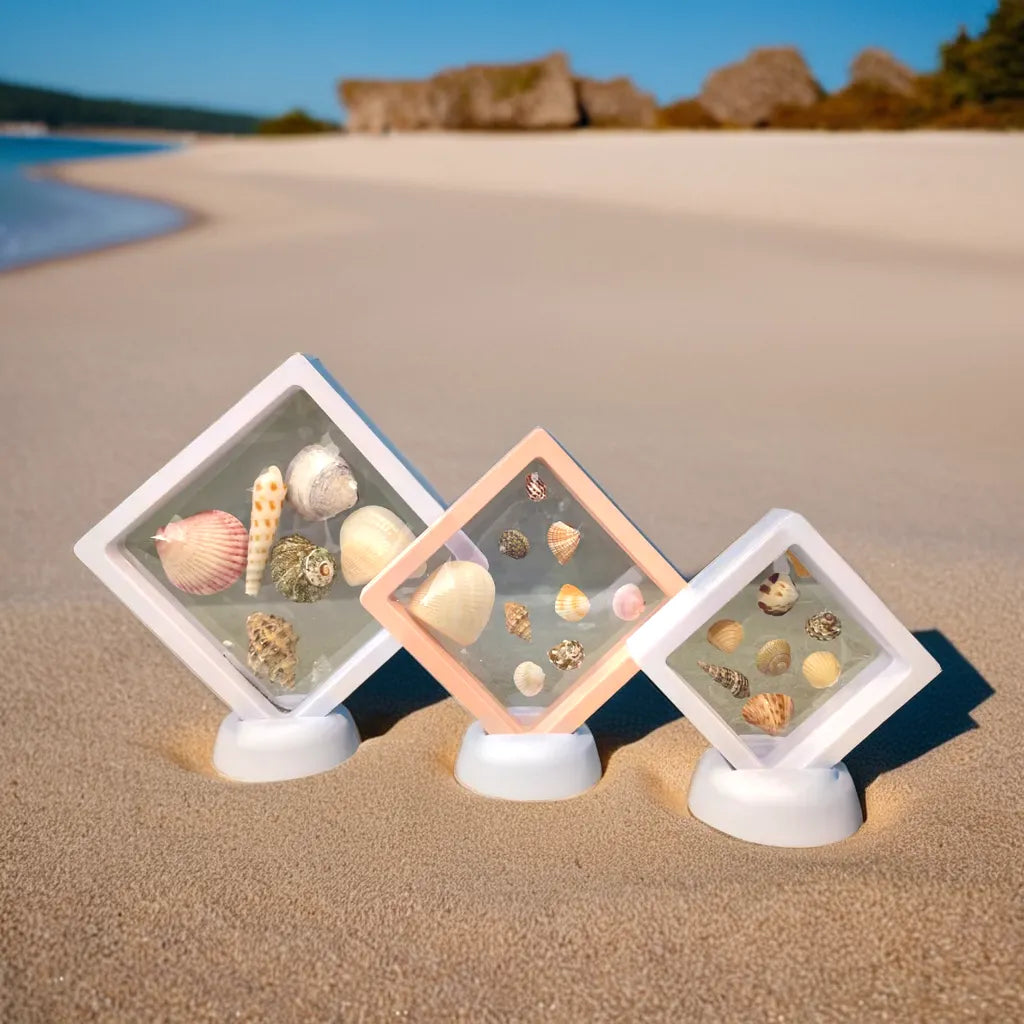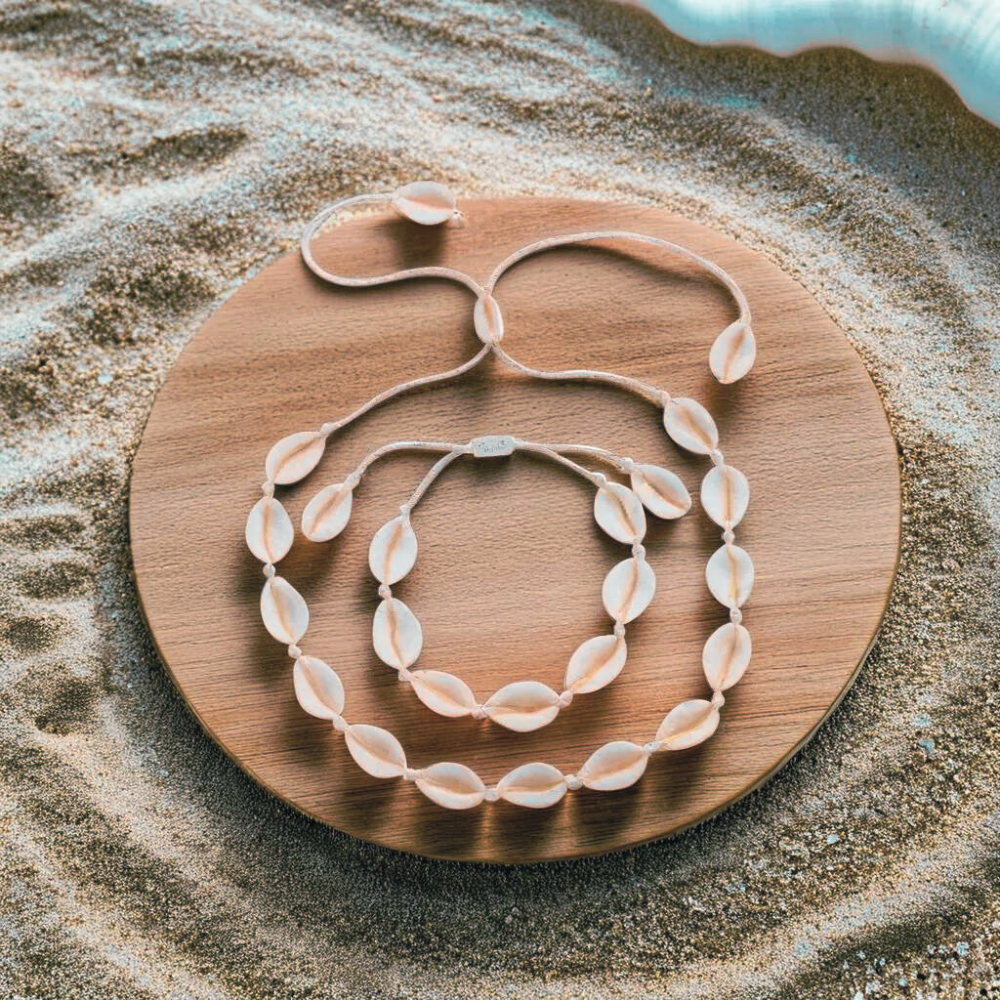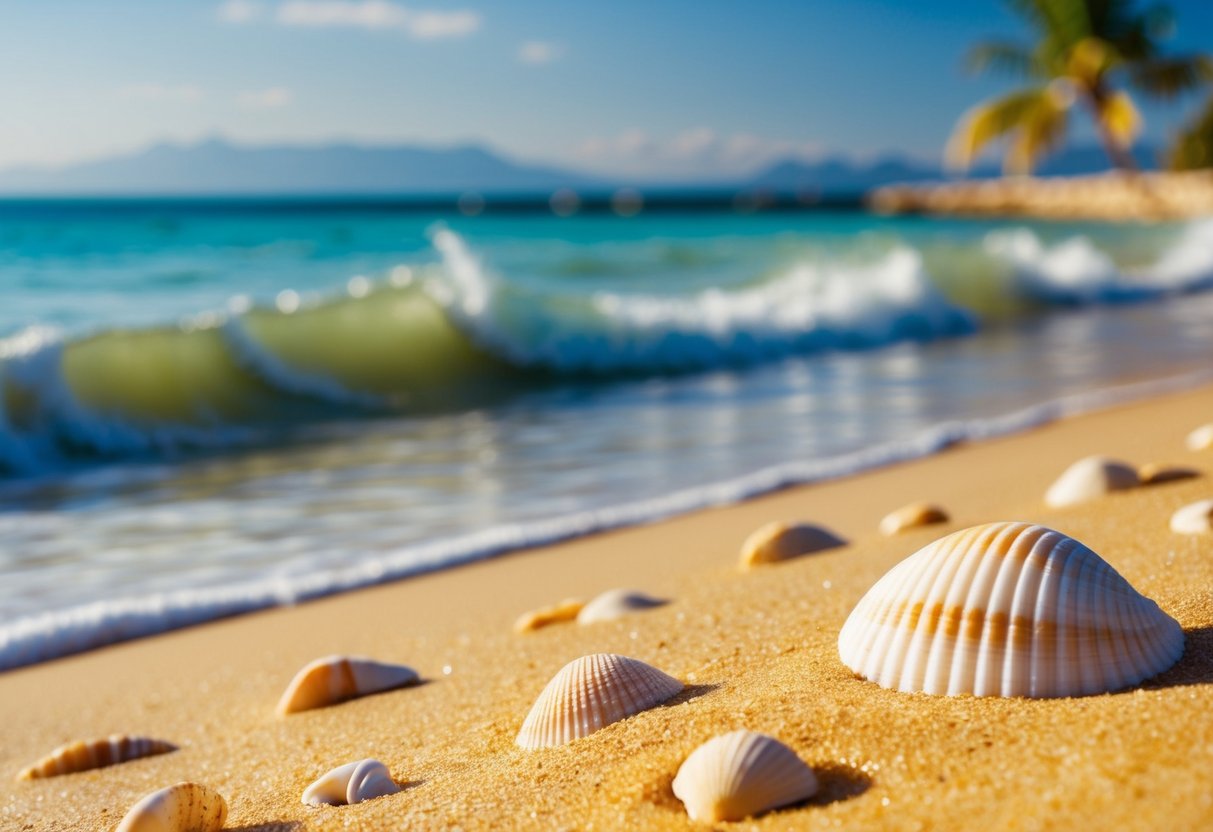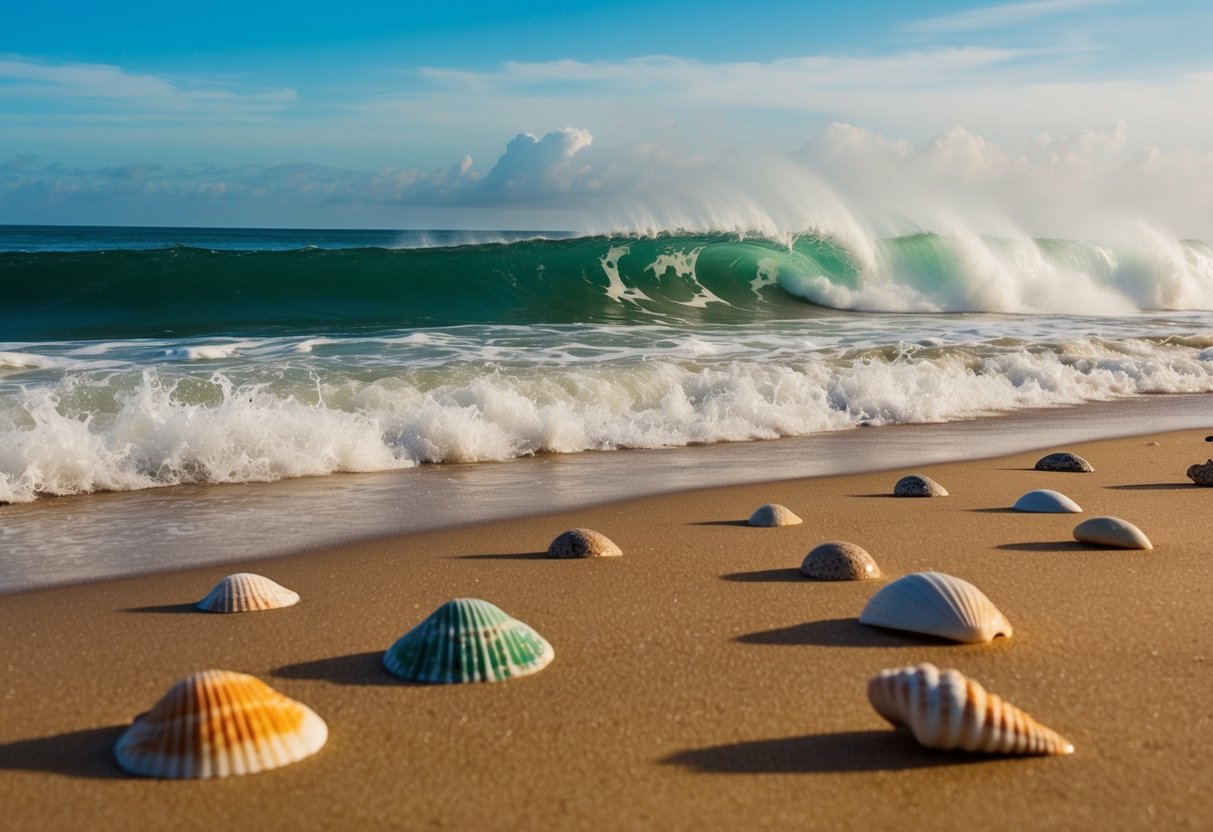Denmark's coastline offers more than just scenic beauty. Its beaches are treasure troves for shell collectors and beachcombers. From the North Sea to the Baltic, Danish shores boast a variety of shells waiting to be discovered.
 Denmark's best shelling beaches provide opportunities to find unique specimens and enjoy coastal scenery. Visitors can explore sandy stretches, rocky coves, and tidal flats in search of colorful and interesting shells. These beaches also offer a chance to relax, swim, and take in Denmark's natural beauty while hunting for seaside souvenirs.
Denmark's best shelling beaches provide opportunities to find unique specimens and enjoy coastal scenery. Visitors can explore sandy stretches, rocky coves, and tidal flats in search of colorful and interesting shells. These beaches also offer a chance to relax, swim, and take in Denmark's natural beauty while hunting for seaside souvenirs.
 Denmark's best shelling beaches provide opportunities to find unique specimens and enjoy coastal scenery. Visitors can explore sandy stretches, rocky coves, and tidal flats in search of colorful and interesting shells. These beaches also offer a chance to relax, swim, and take in Denmark's natural beauty while hunting for seaside souvenirs.
Denmark's best shelling beaches provide opportunities to find unique specimens and enjoy coastal scenery. Visitors can explore sandy stretches, rocky coves, and tidal flats in search of colorful and interesting shells. These beaches also offer a chance to relax, swim, and take in Denmark's natural beauty while hunting for seaside souvenirs.
1) Rømø Beach
Rømø Beach stands out as one of Denmark's premier shelling destinations. Located on the island of Rømø off the southwest coast of Jutland, this beach offers a vast expanse of sand and sea. The beach stretches for miles, making it one of the widest in Europe. Its expansive shoreline provides ample space for beachcombers to search for shells without feeling crowded. Rømø Beach is known for its diverse collection of seashells. Visitors can find various types, including cockles, mussels, and scallops. The constant tides bring in new treasures daily. The shallow waters near the shore create ideal conditions for shell deposits. This makes it easier for shell enthusiasts to spot and collect interesting specimens. The beach's natural beauty adds to the shelling experience. Wide-open skies and rolling dunes create a picturesque backdrop for shell hunting adventures. Rømø Beach is accessible by car, allowing visitors to drive directly onto the sand. This unique feature makes it convenient to explore different areas of the beach in search of shells.2) Fanø Beach
Fanø Beach is a stunning stretch of sand on Denmark's west coast. It's located on Fanø island, connected to mainland Jutland by a bridge. The beach spans 12 kilometers between Fanø Bad and Rindby Strand. Its wide, sandy expanse makes it perfect for shell hunting and beachcombing. Visitors can drive their cars directly onto the beach, making it easy to access. This unique feature allows people to set up camp right by the water's edge. The beach is popular for swimming during summer months. Its dynamic nature means the shoreline constantly changes, creating new areas to explore. Fanø Beach is known for its abundant seashells. Beachgoers can find a variety of shells washed up on the shore, including cockles and razor clams. The area is also great for outdoor activities. Kite flying is a favorite pastime due to the strong coastal winds. Wildlife enthusiasts might spot seals lounging on the beach or birds soaring overhead. The natural beauty of Fanø Beach makes it a top destination for nature lovers and shell collectors alike.3) Blåvand Beach
Blåvand Beach stretches for 40 kilometers along Denmark's west coast in Jutland. Its name means "Blue Water Beach" in English. This wide, sandy shore offers plenty of space for beachgoers to spread out and relax. The beach is known for its shallow waters, making it safe for families with children. Its clean sand is perfect for building sandcastles or playing beach games. Visitors can also explore World War II bunkers along the coastline. Blåvand Beach is a popular spot for shell collectors. The North Sea waves wash up many interesting shells and other treasures. Lucky beachcombers might even find pieces of amber along the shore. The nearby Blåvandshuk Lighthouse marks Denmark's westernmost point. From here, visitors can gaze out at the vast North Sea. On clear days, they may spot offshore wind turbines on the horizon. This beach offers a mix of natural beauty and historical interest. Its long shoreline provides ample opportunity for peaceful walks and shell hunting. Blåvand Beach is a must-visit destination for shell enthusiasts exploring Denmark's coastal areas.4) Skagen Beach
Skagen Beach sits at Denmark's northernmost tip. This unique spot marks where the North Sea and Baltic Sea meet. The beach offers excellent shelling opportunities. Visitors can find a variety of shells washed up by the converging seas. The area's strong currents bring in diverse marine life. This results in a wide range of shells for collectors to discover. Common finds include cockle shells, mussels, and scallops. Lucky beachcombers might even spot rare species carried in by the currents. Skagen's picturesque setting adds to the shelling experience. The beach's golden sands and blue waters create a stunning backdrop. For the best shelling, visit during low tide. Early morning walks along the shoreline can yield the freshest finds. Remember to check local regulations before collecting shells. Some areas may have restrictions to protect the natural environment.5) Dueodde Beach
Dueodde Beach sits at the southern tip of Bornholm Island in the Baltic Sea. It's known for its ultra-fine white sand and clear, clean water. The beach stretches for several kilometers on both sides of Bornholm's southern point. Visitors can enjoy both shallow and deep water close to the shore. Dueodde's sand is so fine that it was once used in hourglasses. The soft texture makes it perfect for barefoot walks along the shore. The beach is backed by expansive dunes and pine trees, creating a picturesque setting. It's especially beautiful during sunset, when the pastel light paints the landscape. Shelling enthusiasts can find a variety of seashells along Dueodde's coastline. The beach's location in the Baltic Sea offers unique shell-hunting opportunities. Dueodde Beach is considered one of the best beaches in Europe. Its natural beauty and pristine conditions attract both locals and tourists.6) Hvide Sande
Hvide Sande, located on Denmark's western coast, offers a unique shelling experience. The North Sea shoreline provides a diverse array of shells for collectors to discover. The beach stretches along the coastline, giving shell hunters plenty of space to explore. Soft, golden sand makes for comfortable walking as visitors search for treasures. Wind-swept dunes add to the coastal charm. The area's strong winds contribute to the variety of shells that wash up on the shore. Beachcombers can find a mix of common and rare shells. The ever-changing tides bring new finds daily, keeping the search exciting for shell enthusiasts. The nearby wind turbines create an interesting backdrop for shell hunting. These towering structures add a modern touch to the natural beach setting. Hvide Sande's beach is not just for shelling. Visitors can also enjoy swimming, sunbathing, and water sports. The area is popular for windsurfing and kiteboarding due to its consistent winds. Wildlife enthusiasts might spot coastal birds while searching for shells. This adds an extra element of interest to the shelling experience at Hvide Sande.7) Grenen Beach
Grenen Beach sits at the northernmost tip of Denmark, where two seas meet. This unique location makes it a special spot for beachcombers and shell collectors. The beach stretches along a narrow peninsula, often called "The Branch." Strong currents from the Skagerrak and Kattegat seas clash here, bringing in a variety of shells and sea treasures. Visitors can find different types of seashells washed up on the shore. Common finds include cockle shells, mussels, and sometimes even pieces of amber. The beach's constantly changing landscape due to wind and waves creates new areas to explore for shell hunters. Each day can bring fresh discoveries. While shelling, beachgoers might spot seals sunbathing on the sand or sea birds flying overhead. The area is known for its diverse wildlife. It's important to note that swimming is not allowed at Grenen due to strong currents. However, the beach offers plenty of space for walking and searching for shells. A popular activity is taking the "Sandormen" tractor-pulled vehicle to the beach's tip. This gives shell collectors easy access to different parts of the shoreline.8) Søby Beach
Søby Beach is a hidden gem on the Danish island of Ærø. This small, sheltered bay offers visitors a tranquil seaside experience. The beach boasts fine, golden sand and shallow waters, making it ideal for families with children. A charming jetty extends into the sea, perfect for leisurely strolls or fishing. Located next to Søby Marina, the beach provides easy access to amenities. Visitors can enjoy ice cream treats or relax at the nearby playground. Shelling enthusiasts will find Søby Beach a rewarding spot. The gentle waves and sandy bottom create prime conditions for collecting various seashells. During summer months, the beach hosts crab races, adding a fun element to beachcombing activities. This unique event allows visitors to engage with local marine life. Søby Beach's calm waters and scenic surroundings make it an excellent choice for those seeking a peaceful day by the sea. Its location on Ærø island adds to its charm and appeal for shell collectors.9) Løkken Beach
Løkken Beach is a stunning stretch of coastline in northern Denmark. It boasts 10 kilometers of fine white sand, perfect for beachcombers and shell collectors. The beach is known for its wide expanse, allowing plenty of space for visitors to spread out. Its shallow waters make it ideal for families with children who want to splash and play safely. During summer, Løkken Beach comes alive with 500 private white beach huts dotting the shoreline. These charming structures add character to the landscape and provide convenient spots for beachgoers to change or store their belongings. Shell seekers will find a variety of treasures along the water's edge. The North Sea waves bring in an assortment of shells, sea glass, and other marine curiosities. Outside of peak season, visitors can drive on certain parts of the beach. This unique feature allows for easy exploration of the long coastline and access to prime shelling spots. Løkken Beach offers clean sand and clear air, creating a refreshing environment for shell hunting and beach activities. Its beauty and spaciousness make it a top choice for shell enthusiasts visiting Denmark.10) Kandestederne Beach
Kandestederne Beach is a hidden gem on Denmark's northern coast. Located near Skagen, this beach stretches for over 2 kilometers. Its fine white sand makes it a prime spot for shelling enthusiasts. The beach offers a peaceful atmosphere away from crowded tourist areas. Visitors can enjoy long walks along the shoreline while searching for seashells. Kandestederne's unique position allows for interesting shell finds. The mixing of waters from the North Sea and Baltic Sea brings a variety of shells to its shores. The beach is known for its natural beauty and unspoiled landscape. It's a great place to observe local wildlife and take in stunning coastal views. Shell collectors may find common varieties like cockles, mussels, and periwinkles here. Lucky beachcombers might also discover rarer specimens washed up by the tides. The best time for shelling at Kandestederne is after storms or during low tide. These conditions often reveal new treasures along the beach. Remember to follow local guidelines when collecting shells. This helps preserve the beach's ecosystem for future visitors to enjoy.Geography and Climate
Denmark's coastline and climate create ideal conditions for shelling. The country's unique geography and seasonal weather patterns shape its beaches and marine ecosystems.Coastline Characteristics
Denmark has over 7,300 kilometers of coastline. Its shores touch the North Sea, Skagerrak, Kattegat, and Baltic Sea. Many beaches feature soft sand and gentle slopes. This layout allows shells to wash up easily. The west coast faces the North Sea. It has stronger waves and wider beaches. The east coast is more sheltered. It has calmer waters and smaller beaches. Denmark also has many islands. Each has its own coastal features. Some have rocky shores, while others have long stretches of sand.Seasonal Weather Patterns
Denmark has a temperate climate with four distinct seasons. This affects shelling opportunities throughout the year. Spring brings milder temperatures and occasional storms. These conditions can uncover new shells on beaches. Summers are warm but not hot. This is peak beach season. Water temperatures rise, increasing marine life activity. Fall often has strong winds and rain. These weather patterns can deposit fresh shells on shore. Winters are cold with some snow. Rough seas during this time can reveal hidden treasures on beaches. The best shelling often happens after storms or high tides. These events bring new shells to the shore.Optimal Shelling Conditions
To find the best shells on Danish beaches, timing is key. The right tides and seasons can make a big difference in what you discover.Tide Schedules
Low tide is the best time for shelling in Denmark. As the water pulls back, it reveals hidden treasures on the shore. Check local tide charts before your trip. The North Sea coast has bigger tides than the Baltic Sea side. Look for beaches with a gradual slope. These areas tend to trap more shells as the waves roll in. After storms is a great time to search. Strong waves often wash up new shells. Early morning is ideal. You'll have first pick before other beachgoers arrive. Bring a bucket and small shovel to help collect your finds.Best Times of Year
Spring and fall are prime shelling seasons in Denmark. Fewer tourists mean less competition for shells. The weather is also milder, making for pleasant beach walks. March to May sees many shells wash up after winter storms. September to November can be good too. Summer can work, but beaches are busier. Some shells to look for:- Cockles
- Mussels
- Oysters
- Scallops
- Whelks































